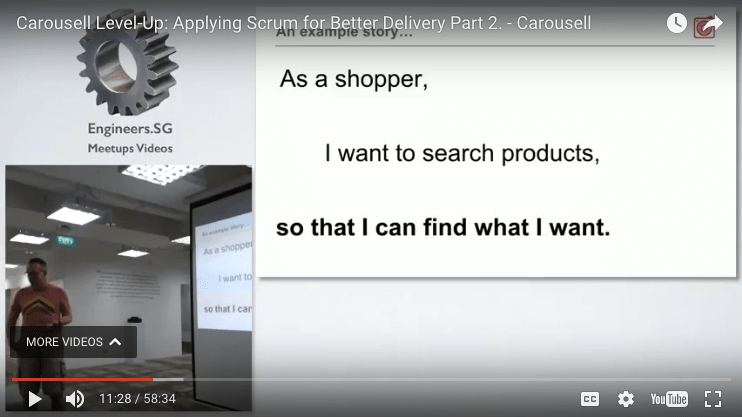Hi all! It has been a while since some of us have gone for the Scrum training by Mr Stuart, building balloon animal zoos to learn what is Scrum, and how to operate in a Scrum team. While I personally find the concepts he delivered enriching, some of his answers to our bread-and-butter issues seemed slightly aloof and less than motivating (for example, “some companies spend years doing Agile but still could not get it right”). Nevertheless, I believe being Agile is still the right way to go.
However, after watching this video, the 2nd part of a 4-part series, my mind is leaping with joy, exclaiming “Yes, yes! This is the way! We should do something like that!” Below is a summary of the salient points, and my thoughts as well.
Using the Gherkin language to write User Stories
We have heard, that when the Product Owner generates requirements for the sprint, it is better to write user stories so as to paint a clearer and more concrete picture of what is the desired (and accepted) outcome of the requirements. However, the technique of writing user stories remains slightly vague and uncertain. In this video (from the 19:00 mark), the presenter introduced the Gherkin language, a formalised structure of writing user stories, so formalised that it can be automatically translated into programming test scripts, and tested on the final application to validate if the application has met the user story’s requirements. As an engineer, this automated human language processing/testing is thrilling!


The presenter also reminded (from the 9:00 mark), that we need to take time to look at a user story, and break it down into more bite-size user stories and needs. This is to ensure that the small little components are thought through and taken care of. Do listen to the presenter’s example! A member of the audience also pointed out a feature not taken care of by the user story (24:45 mark), hence the need to also think about negative test criteria — what happens when the desired outcome does not happen. In this particular example, “what happens when Mei Ling searches for a product that is not in the inventory.” This is really a good reminder for everyone in our operations.
“Have the movie played out in your mind”
Another captivating concept raised by the presenter, is that for the Product Owner to steer the direction of the product, he/she should have envisioned how the end product is going to look and feel like — in the presenter’s analogy, the director having the whole movie played out in his mind before entering the studio to direct the shoot.
I agree with the presenter almost whole-heartedly, except that when we put matters into context, the Product Owner is required to please the needs of the stakeholders/funders and not just the end users. From time to time, the stakeholders can be vague in terms of what they want, expecting the Product Owner to make sense of the fuzziness and deliver the desired. Hence I feel, everyone — not just the scrum team, but also the stakeholders — can take a tip or two from the process of writing Gherkin user stories, to better communicate their needs, goals and plans to fellow colleagues. Help our Product Owners, and we can grow our products together!
In any case, this is only the 2nd parter of a 4-part series. If you have time on Thursdays, do go attend the talk and ask questions!